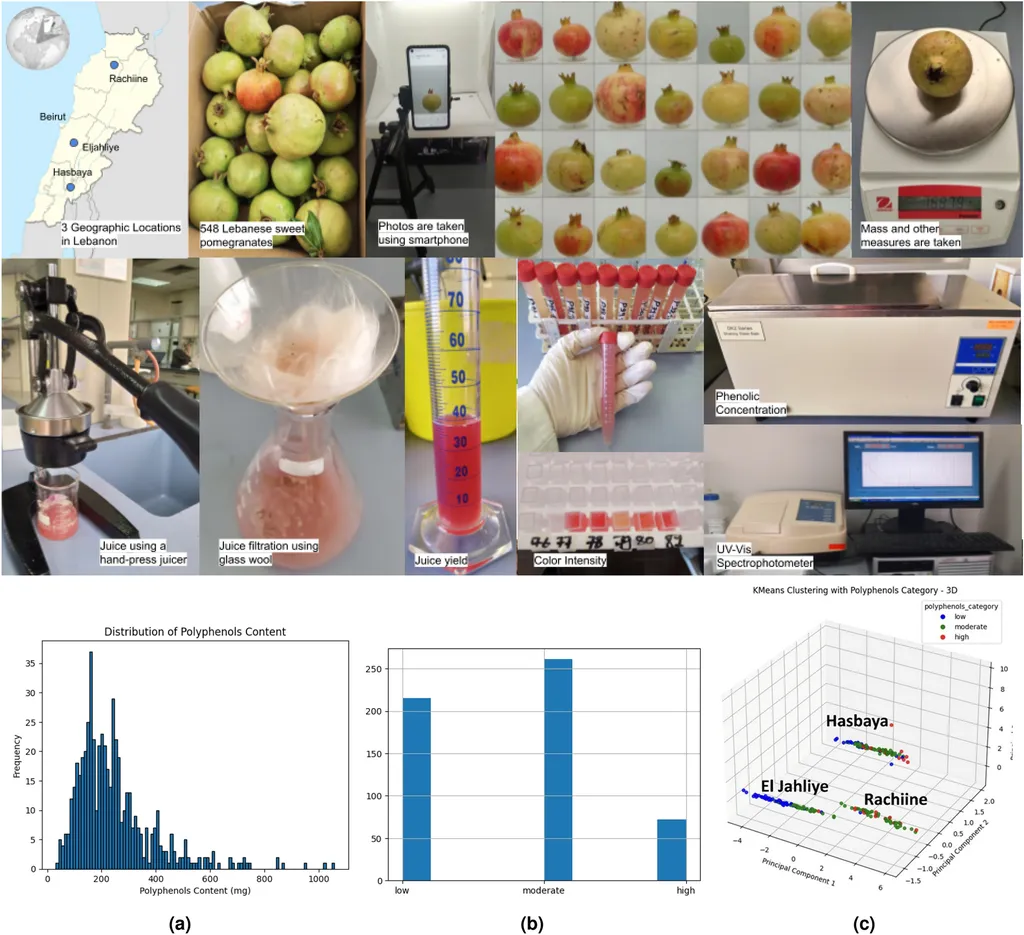In the heart of China’s Jiangxi province, a team of researchers led by Xinyue Huang from the School of Software Engineering at Jiangxi University of Science and Technology has developed a groundbreaking algorithm that could revolutionize pomegranate farming. Their work, published in *Frontiers in Plant Science* (translated as “植物科学前沿”), introduces the DFMA-DETR algorithm, a sophisticated tool designed to accurately detect the maturity of pomegranates, a task that has long challenged farmers and agritech specialists alike.
The DFMA-DETR algorithm addresses several critical issues in traditional pomegranate maturity detection methods. “Conventional approaches often struggle with complex agricultural scenarios,” Huang explains. “They lack robust feature representation capabilities and suffer from singular attention mechanisms, which limit their effectiveness in real-world farming conditions.”
The DFMA-DETR algorithm overcomes these limitations through a combination of dual-domain feature modulation and enhanced attention mechanisms. At its core, the algorithm employs a backbone network called DFMB-Net, which processes both spatial and frequency domains to model the intricate surface textures, color variations, and morphological characteristics of pomegranates. This dual-domain approach allows for a more comprehensive understanding of the fruit’s maturity.
One of the standout features of the DFMA-DETR algorithm is its enhanced attention feature fusion module, which integrates adaptive sparse attention mechanisms with multi-scale feature adapters. “This module effectively addresses feature representation challenges under complex background interference,” Huang notes. “It ensures that the algorithm can accurately detect pomegranate maturity even in challenging farming environments.”
The algorithm also includes an adaptive interpolation upsampling processor and a multi-branch feature convolution module, which significantly improve feature alignment accuracy and multi-scale representation performance. These innovations enable the DFMA-DETR algorithm to achieve impressive detection accuracies of 90.23% mAP@50 and 76.40% mAP@50-95, surpassing the baseline RT-DETR model by 3.13% and 3.06%, respectively.
The implications of this research are far-reaching. Accurate detection of pomegranate maturity can optimize harvesting decisions, enhance economic benefits, and contribute to the broader goals of precision agriculture. “This research provides an effective solution for advancing intelligent detection technologies in precision agriculture,” Huang states. “It paves the way for more efficient and sustainable farming practices.”
The DFMA-DETR algorithm’s superior performance and low model complexity make it a promising tool for farmers and agritech companies. Its ability to generalize across different datasets further underscores its potential for widespread adoption. As the agricultural industry continues to embrace technological advancements, innovations like the DFMA-DETR algorithm will play a crucial role in shaping the future of farming.
In the rapidly evolving field of agritech, the DFMA-DETR algorithm stands as a testament to the power of cutting-edge research and its potential to transform traditional industries. As Huang and her team continue to refine and expand their work, the agricultural sector can look forward to a future where intelligent detection technologies play a central role in optimizing crop yields and enhancing economic benefits.

